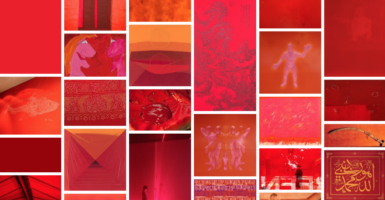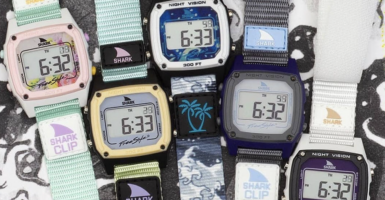Vintage Pics Show How People Really Dressed In The 1950s
When it comes to fashion, the 1950s reflected a return to normalcy after the chaos of World War II. The bulky, utilitarian styles of the war years gave way to tailored suits, hourglass silhouettes, and the return of luxurious or experimental designs.
The decade was also fairly conservative from a fashion standpoint, with styles showing a formality that would be chipped away at in the years to come. For the time, though, 1950s fashions offer a fascinating glimpse at midcentury optimism.
Ivy League fashion became a defining style.
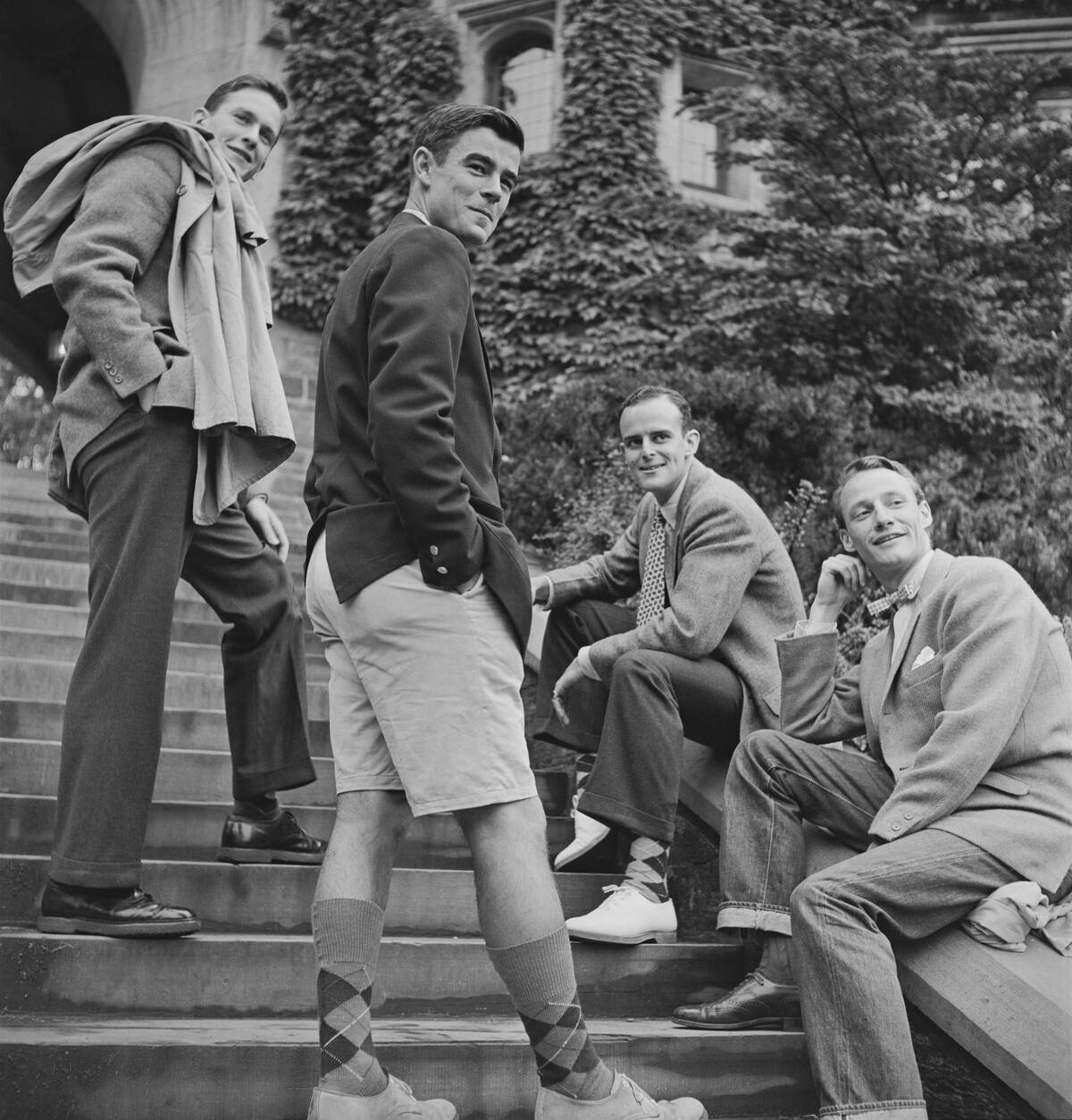
This group of young men epitomizes the Ivy League look, which is appropriate given the fact that they’re students at Princeton University.
This look, which lives on in some of today’s preppy fashions, emphasized a neat overall appearance with Oxford shirts, crewneck sweaters (often jauntily tied around the shoulders), and chinos. Overall, it gives off the appearance of subtle wealth, but in a dressed-down style.
It was a booming decade for ski fashion.
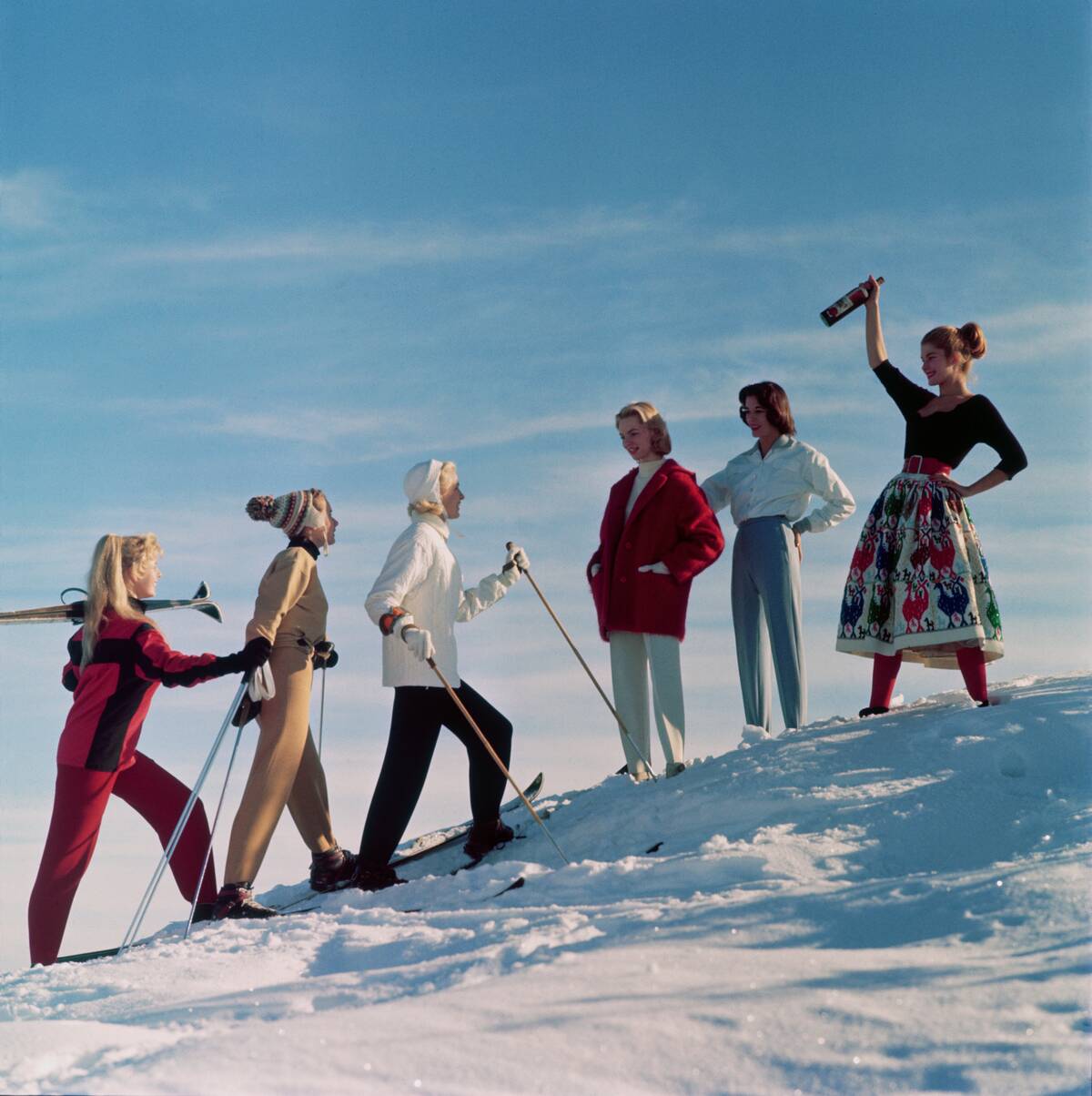
The leisure activity of skiing exploded in popularity during the 1950s, and as such the garb worn by skiers underwent a dramatic change. Early in the decade, ski style was still heavily influenced by military surplus gear, but within a few years, that would change.
For women, ski style included tapered ski pants that hugged the body, colorful parkas, and belted jackets. Men also wore ski pants, paired with layered wool knits and windproof jackets.
The Beat Generation influenced popular styles.

As London emerged from the wreckage of World War II, a rebellious fashion-oriented undercurrent was slowly but surely developing. As young people rejected the traditional formality of British fashion, they began to embrace a more beatnik aesthetic.
This style was somewhat minimalistic, with dark colors and simple silhouettes serving as a template. The women in this photo are wearing dark belted corduroy jackets, which gives off an almost rock-and-roll aesthetic.
Beachwear was becoming more relaxed.
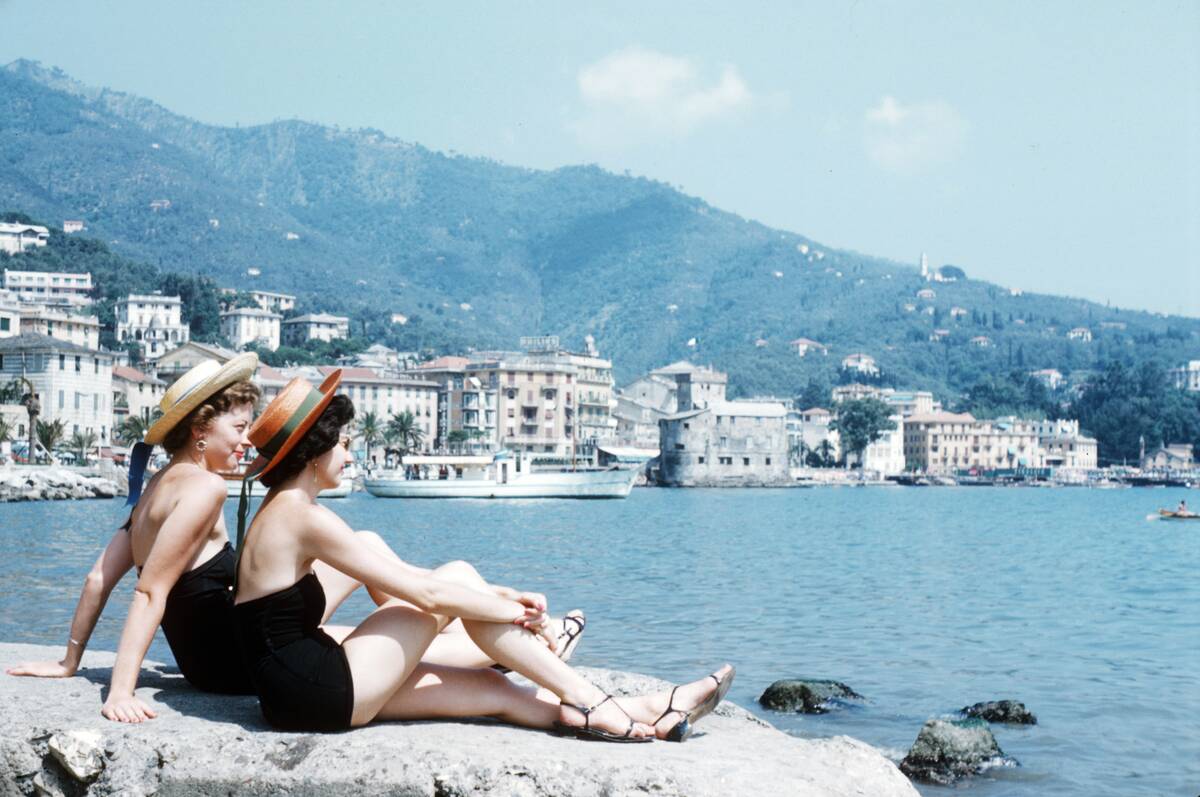
The early decades of the 20th century emphasized modesty to an almost comical degree when it came to beachwear, but by the midcentury years, sunbathers had begun wearing what could be described as modern bathing suits.
Bikinis, which had emerged some years prior, became increasingly popular, as did wedge sandals and oversized sunglasses. It’s worth noting that this 1955 photo was taken in Italy, where attitudes were likely more permissive.
Women’s fashions embraced bold colors.
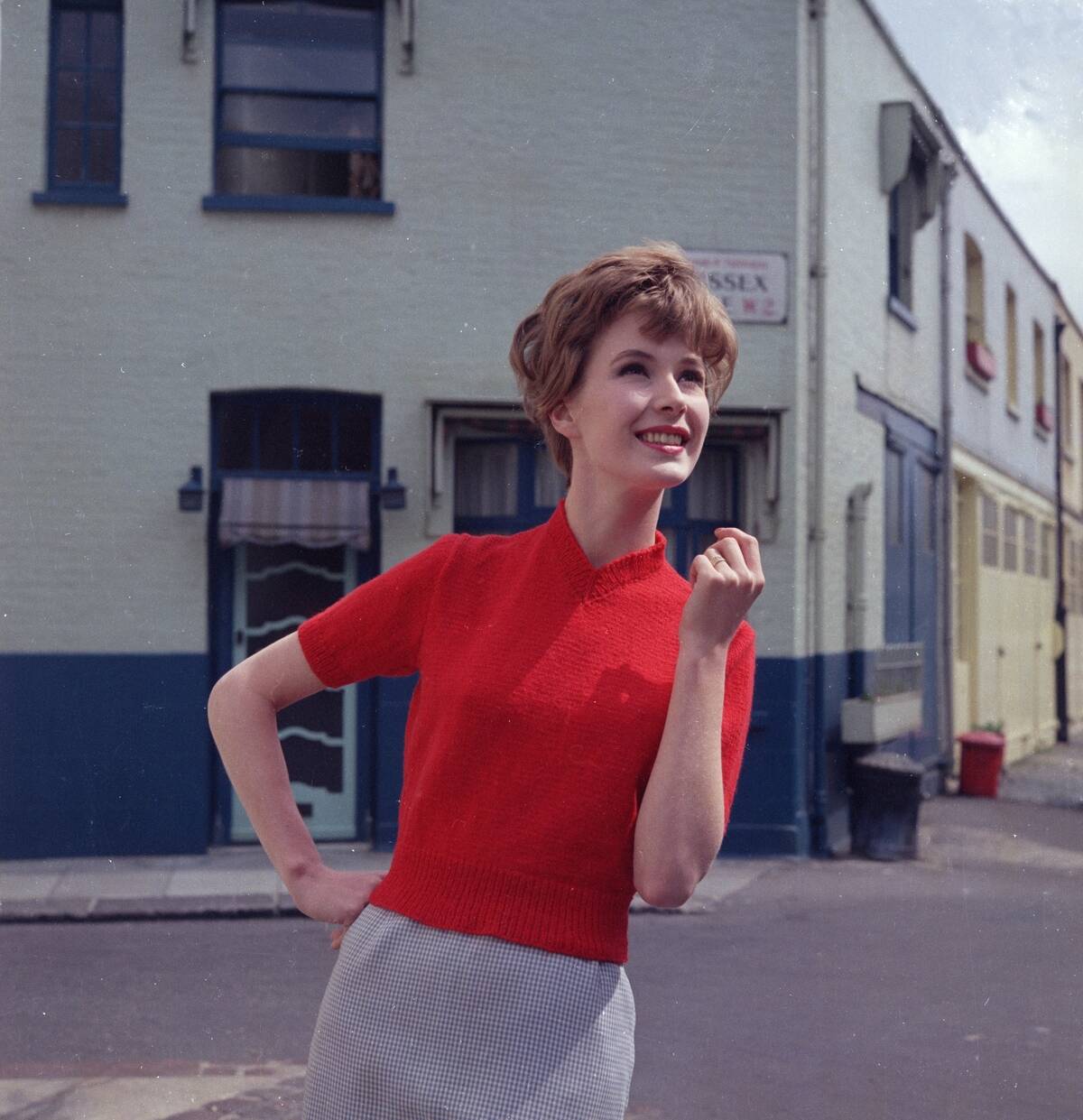
Material shortages during the war years meant that many clothes were made in dull colors, but the postwar boom brought color back into fashion.
For women, colorful jumpers like this — also known as pinafores — were a popular and versatile garment. They were typically short-sleeved or sleeveless, and came in various fabrics, sometimes with decorative buttons and pockets.
Men’s suits were dapper but drab.
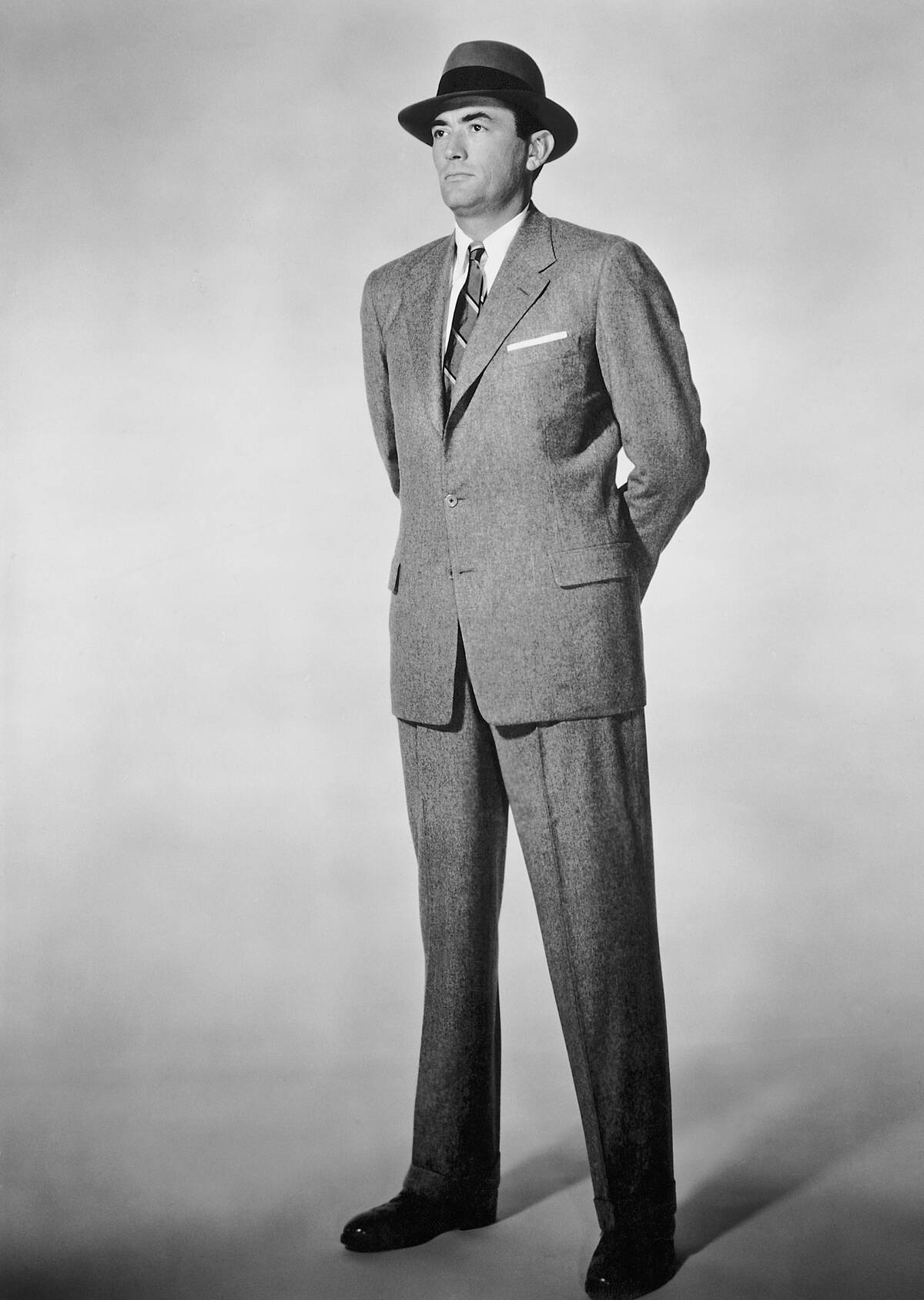
This publicity still of actor Gregory Peck in a gray flannel suit comes from the appropriately-named film The Man in the Gray Flannel Suit. While Peck is a dashing figure in the suit, this was run-of-the-mill menswear at the time.
Men’s suits were almost always tailored to ensure a stylish fit, and single-breasted jackets with narrow lapels in a streamlined silhouette became popular. Oftentimes, this sharp menswear was paired with a matching fedora.
Fashion viewing fashion.
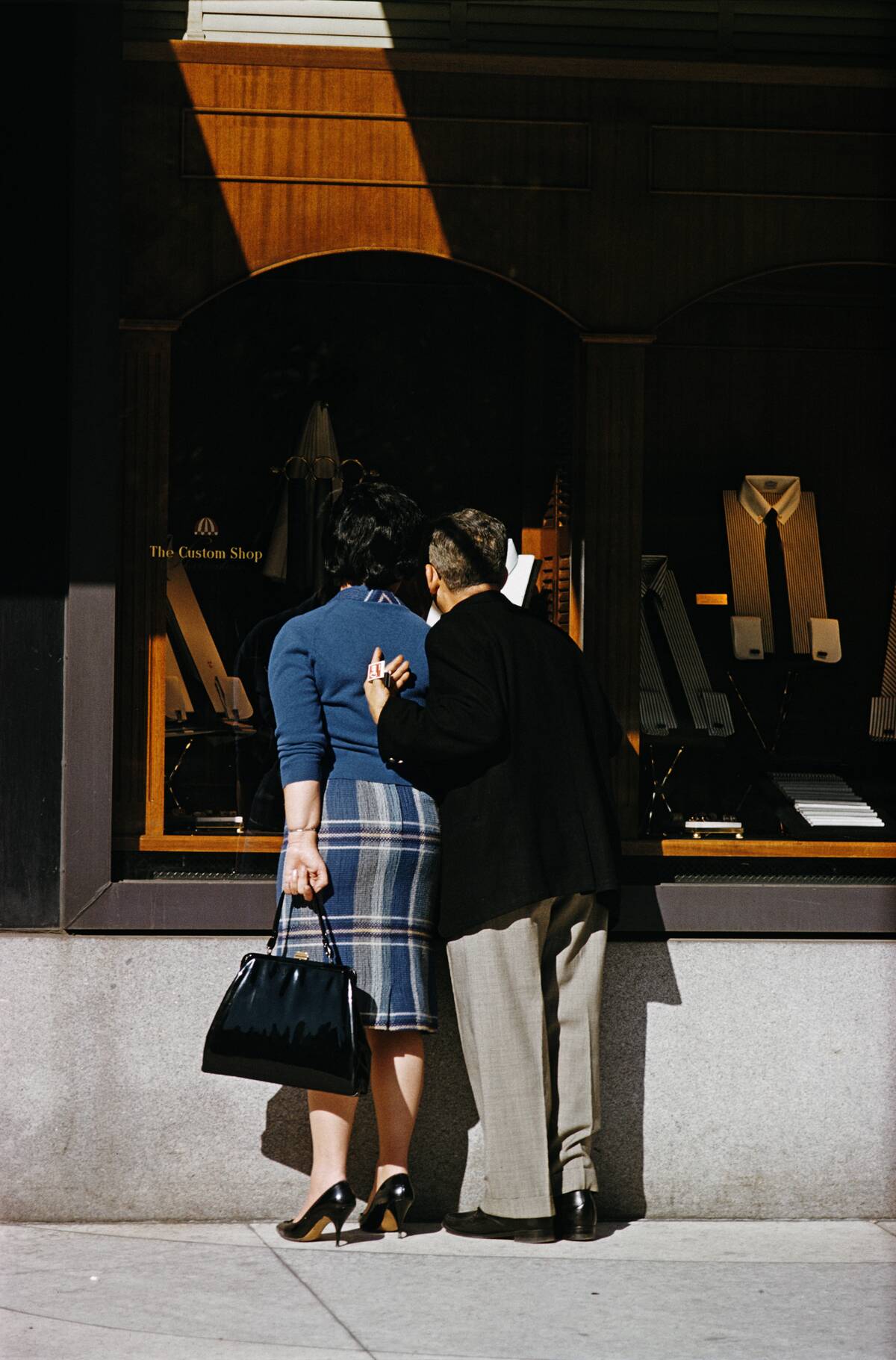
This candid image of a couple taking part in some window-shopping also gives us a glimpse of what everyday people were wearing during the decade.
The man is wearing a suit overcoat, while the woman is sporting a plaid skirt, which was a widely-worn garment during the time. These skirts were often heavy-duty affairs, made of wool or cotton blends, and came in knee-length or mid-calf lengths in keeping with modesty trends of the ’50s.
Women’s fashion was all about hourglass silhouettes.
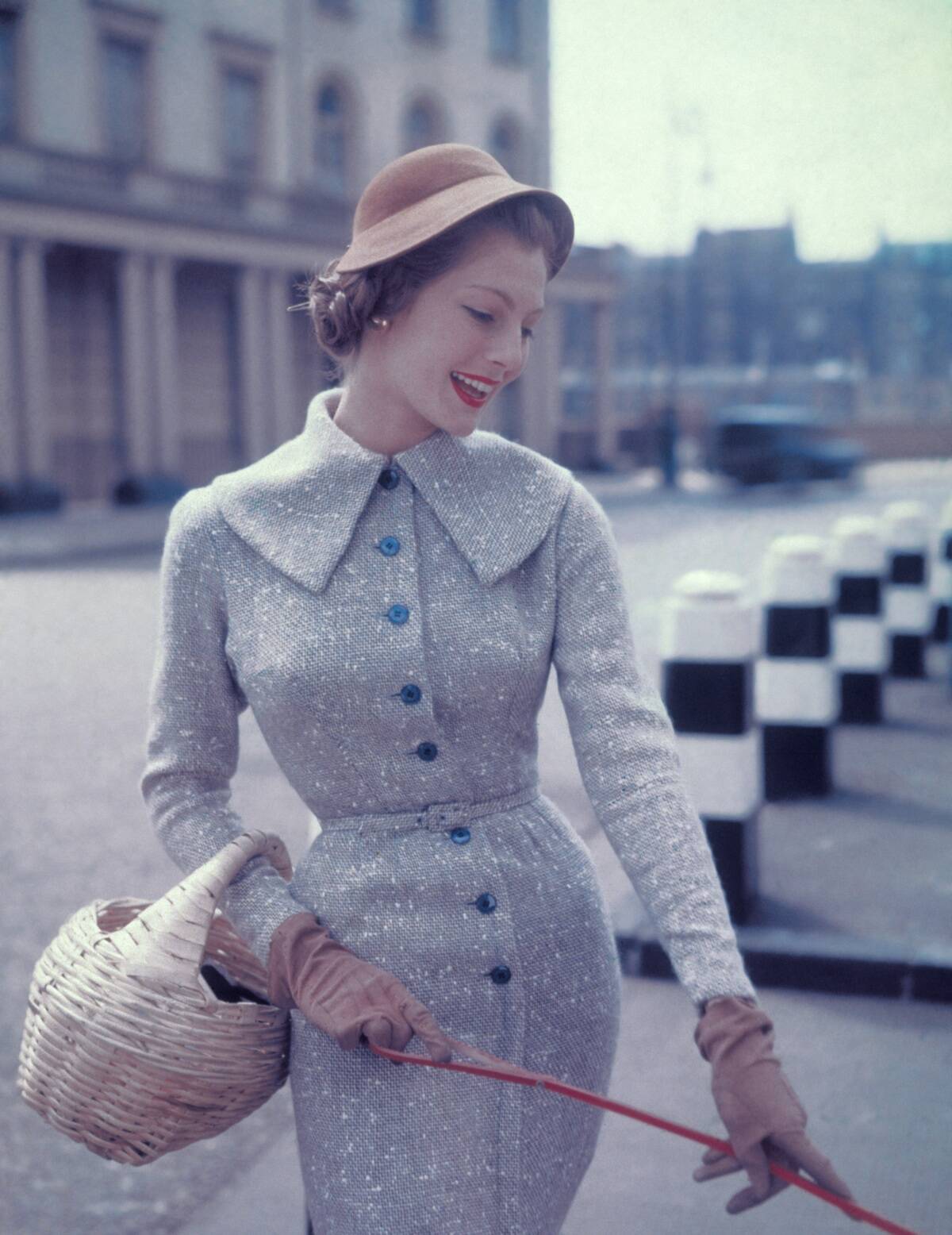
The belted winter dress worn by this woman is a quintessentially ’50s look, as it demonstrates the cinched waist and hourglass figure that was in vogue at the time.
While hourglass silhouettes have been popular throughout 20th century fashion, enthusiasm reached a fever pitch in the 1950s, as years of wartime fashions had seen many people wearing heavy, ill-fitting clothes.
Young people embraced a more casual aesthetic.
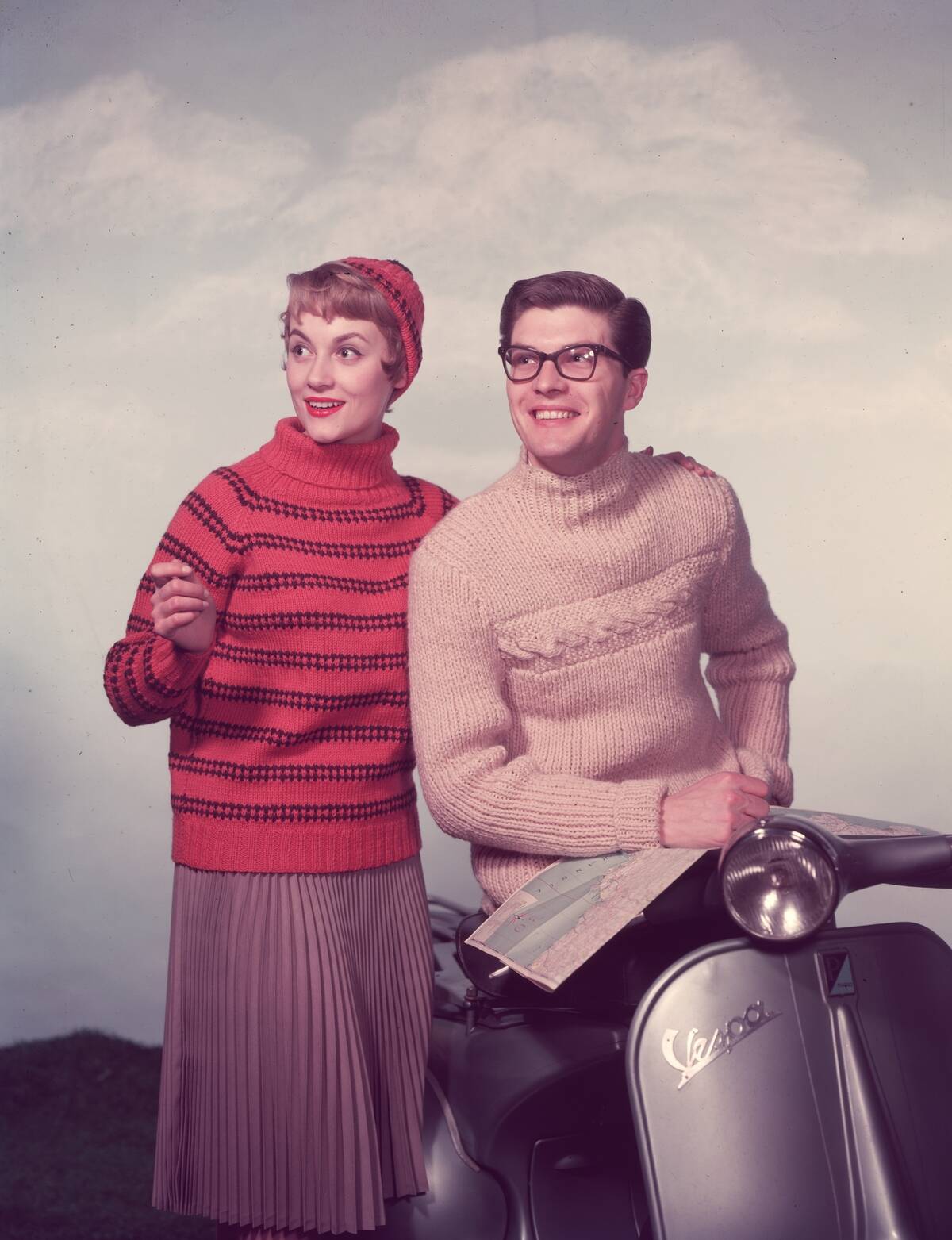
Men and women of the 1950s are often seen dressed to the nines, but more casual styles were beginning to take root with the younger generation, as evidenced by the emergence of the preppy style.
The sweaters worn by this young couple could be seen as an amalgamation of several other fashion trends of the time, including ski fashion and preppy style.
Beachwear varied considerably.
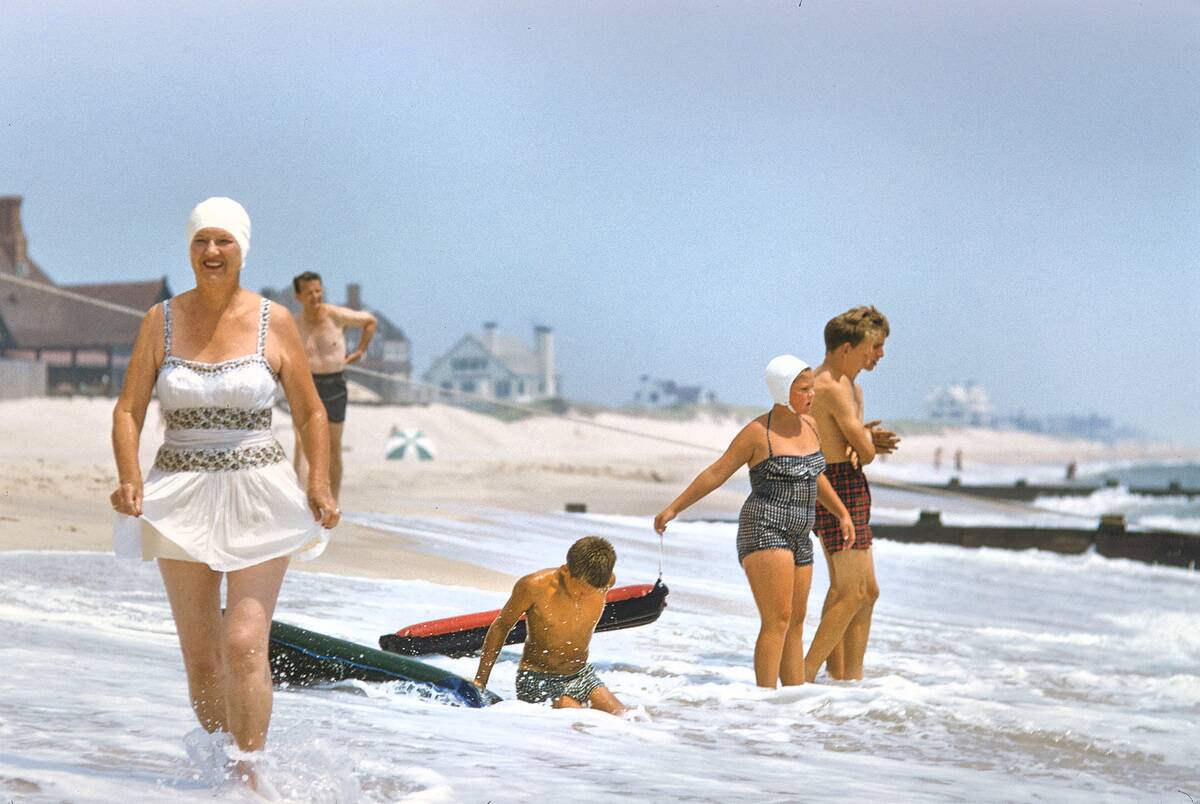
This 1956 photo of a beach on Southampton, Long Island, shows the changing face of beachwear for the middle class. Women are seen wearing swimcaps and modest bathing suits, while the men are wearing high-waisted bathing suits.
The emergence of surf culture later in the decade had a pronounced effect on fashion trends, as both men and women adopted a more casual style.
Fabric itself was beginning to change.
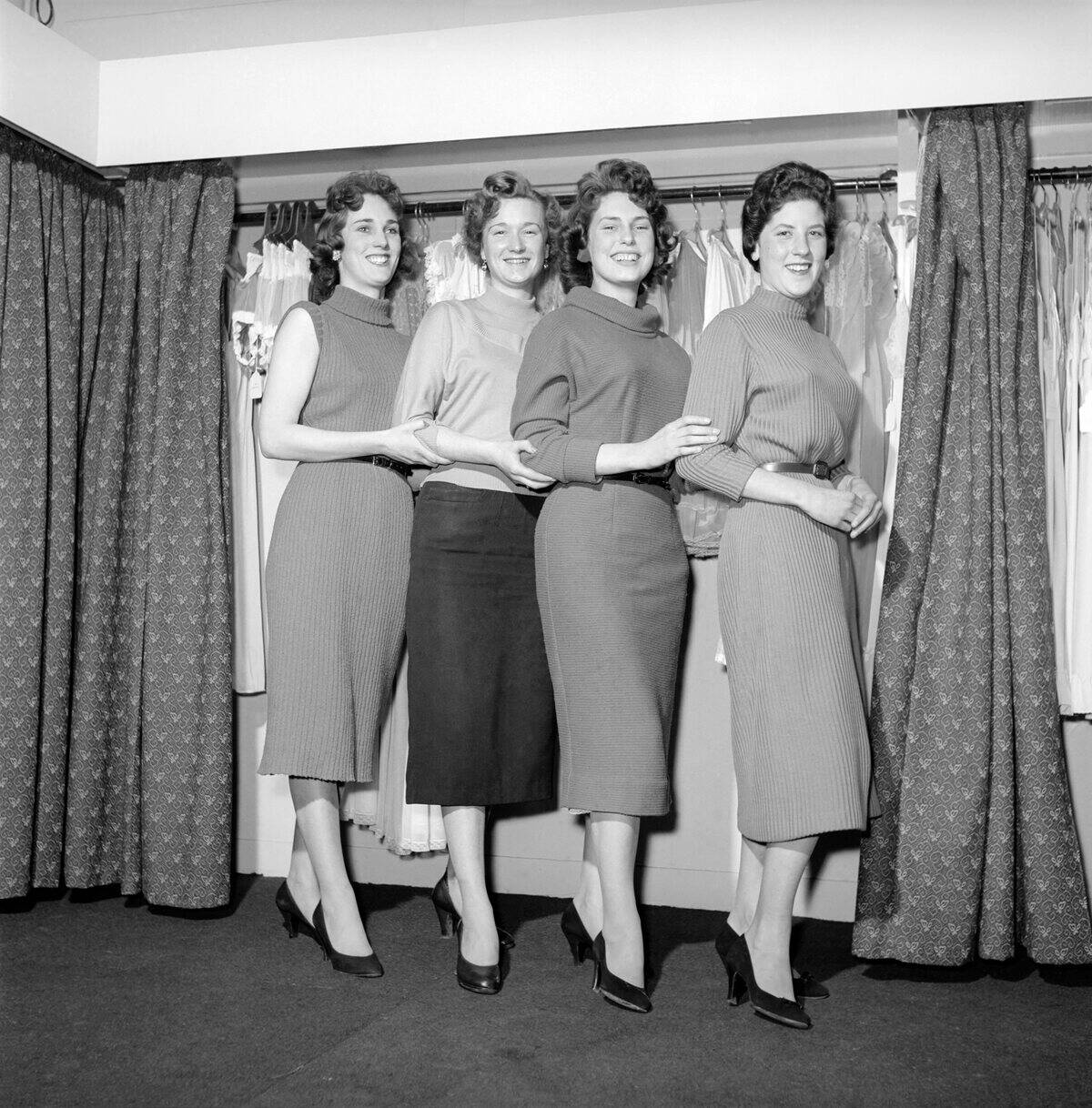
In the modern age, most of our clothes are made, at least in part, of synthetic fabrics — but in the 1950s, synthetic fabrics were just beginning to emerge.
These women are wearing a new lineup of dresses made from synthetic dresses. These garments were affordable, durable, and easy to care for — all traits that made them enormously popular in the years to come.
People would dress down, too.
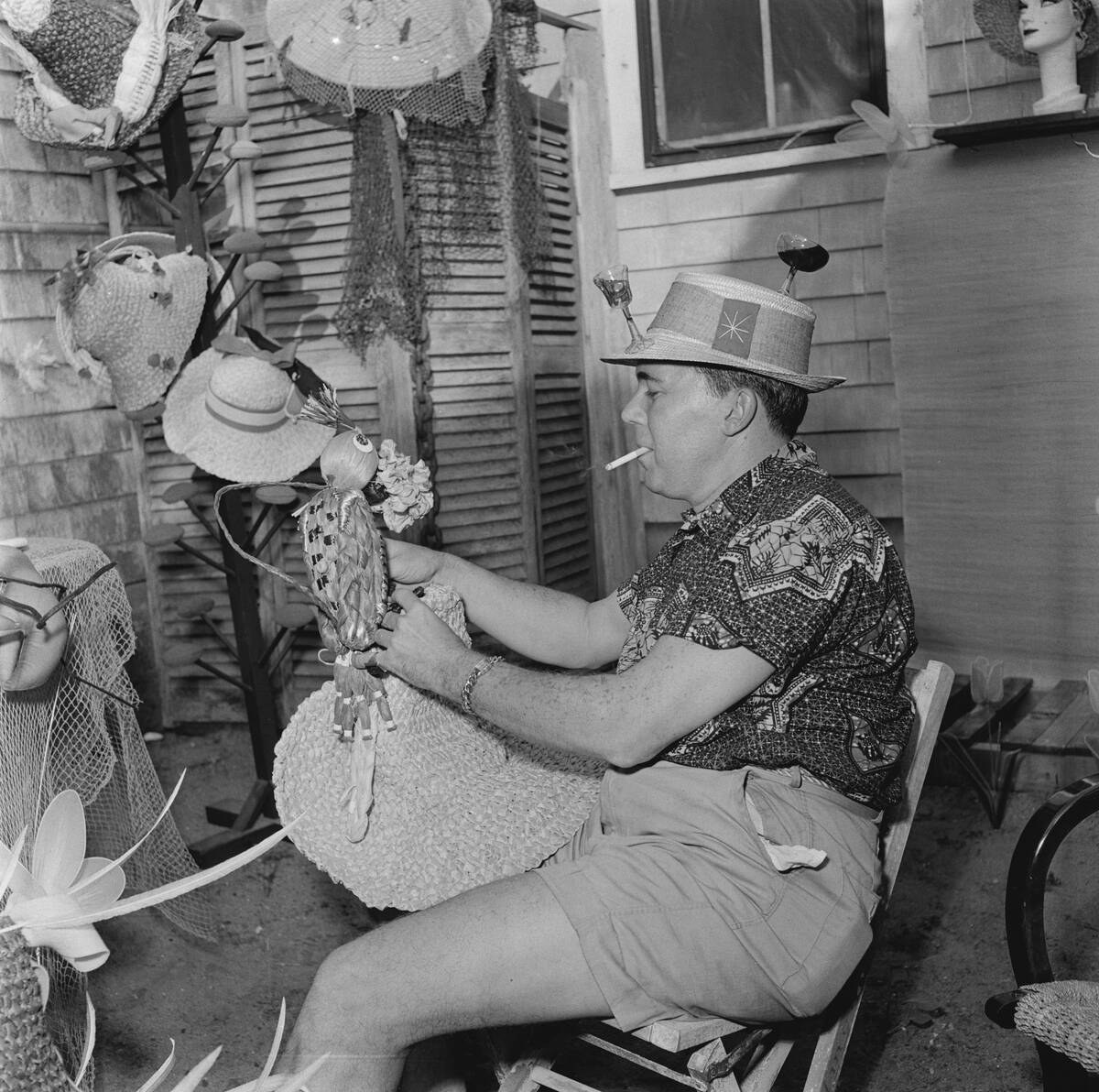
Men in the 1950s didn’t wear fedoras and suits all the time — sometimes, they wore fedoras and beach shirts. Casual wear for men of the time almost always involved some kind of collared shirt, as t-shirts were still seen largely as a form of underwear.
This man is wearing a pair of shorts as well — another garment that was beginning to become more commonplace for men, particularly during the hot summer months.
A retail snapshot.
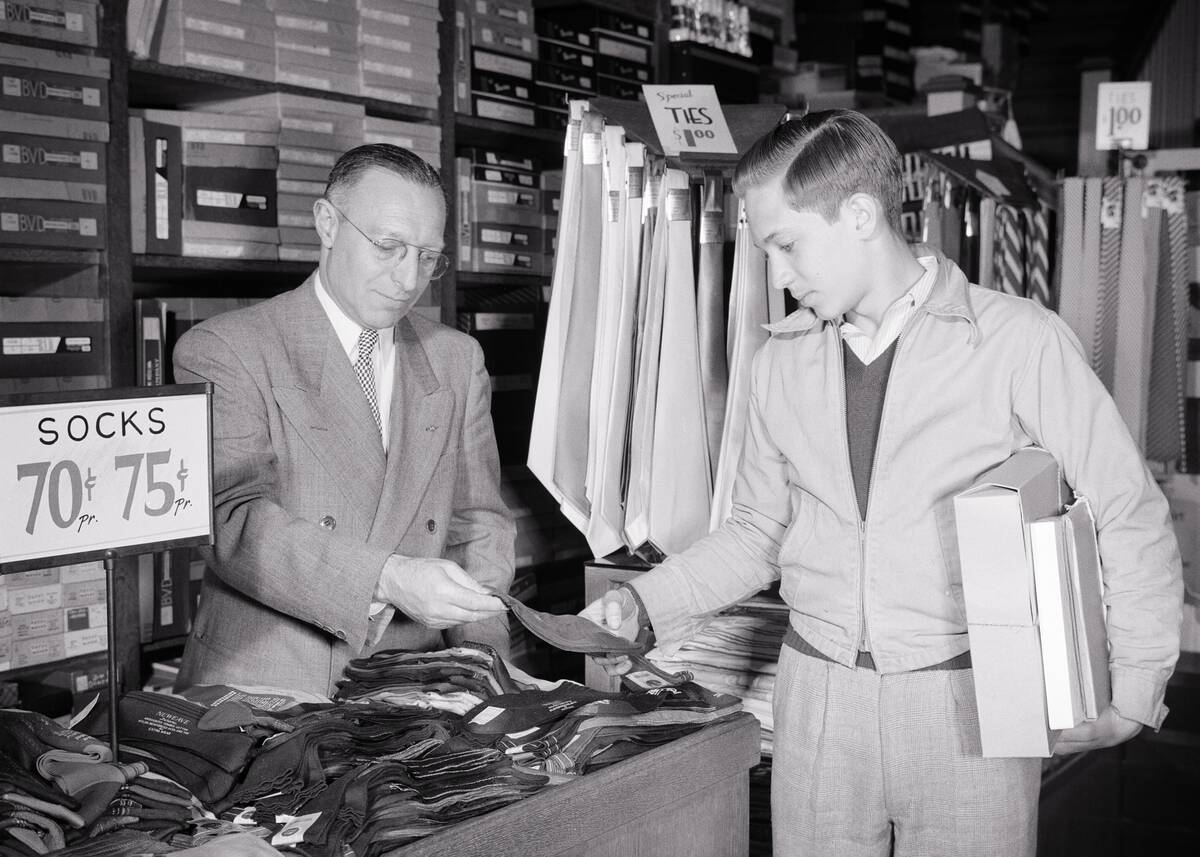
This fascinating image shows a teenage boy shopping for socks with the help of a retail clerk. While modern-day employees might wear a store-branded polo, this employee is dressed to the nines in a suit.
The shopper, on the other hand, shows the changing face of casual wear. While he’s wearing a sharp pair of pants and a collared jacket, he’s dressed down — at least in comparison to the employee.
Fashions for schoolchildren were simple.

This photo of Baltimore’s first integrated school offers a look at what typical schoolchildren of the 1950s were wearing. Girls generally wore a simple dress, sometimes with a full skirt or pleats, along with a cardigan for cool weather.
This was a decade in which school uniforms were also fairly commonplace, even if they’re not shown here.
Women’s office wear underwent a change.
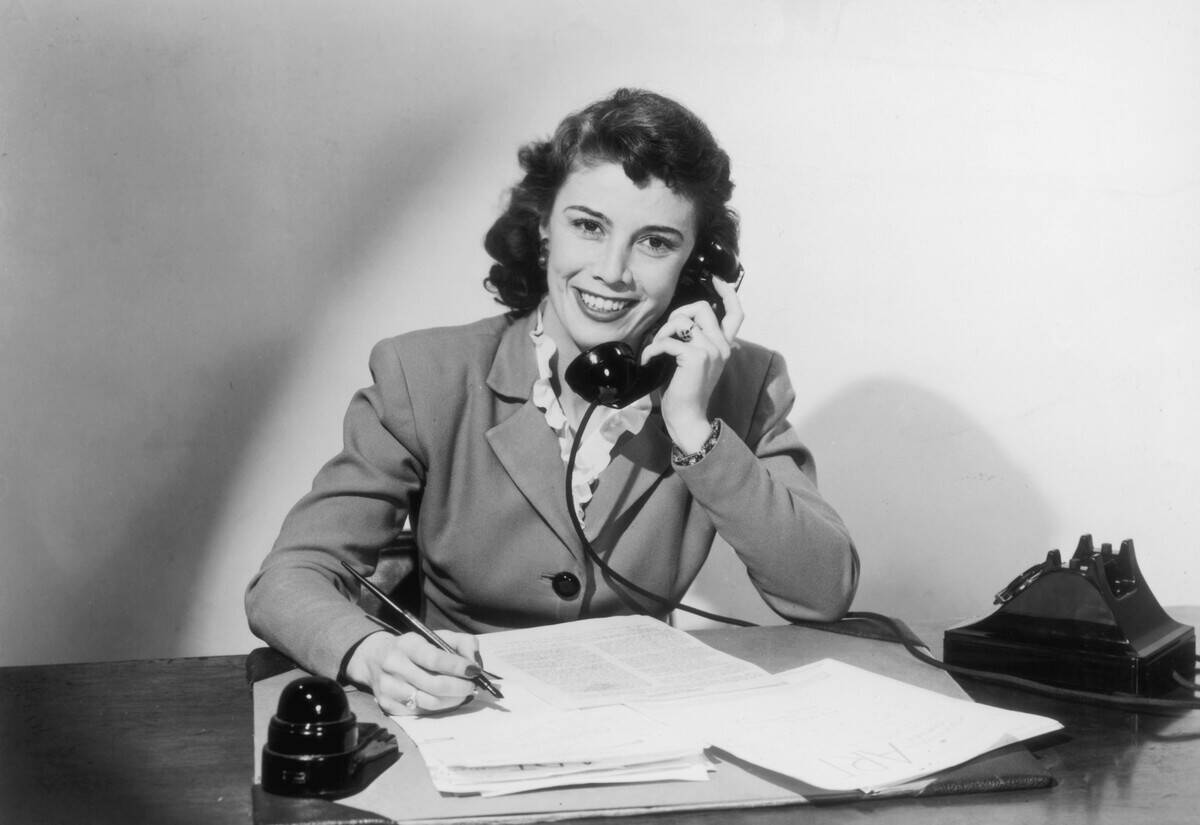
This 1950 photo of a businesswoman shows that the bulkier clothes of the war years were still being worn into the early years of the ’50s.
As the decade wore on, women in the workplace started to lean more towards tailored suits with pencil skirts. The overall effect was to strike a balance between the more formal suits worn by men with the figure-hugging, feminine designs marketed towards women.
